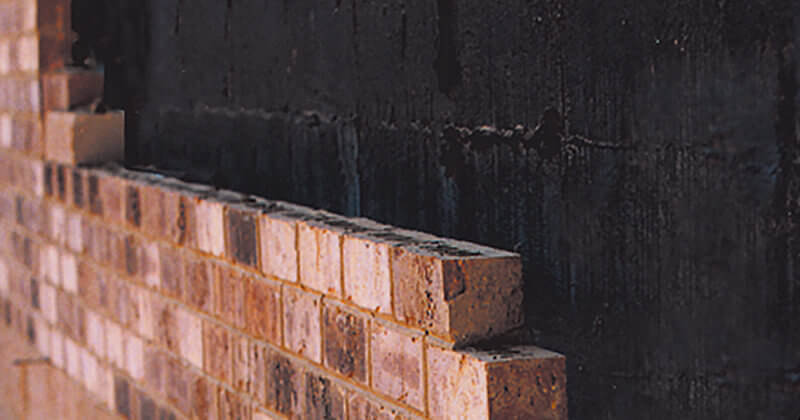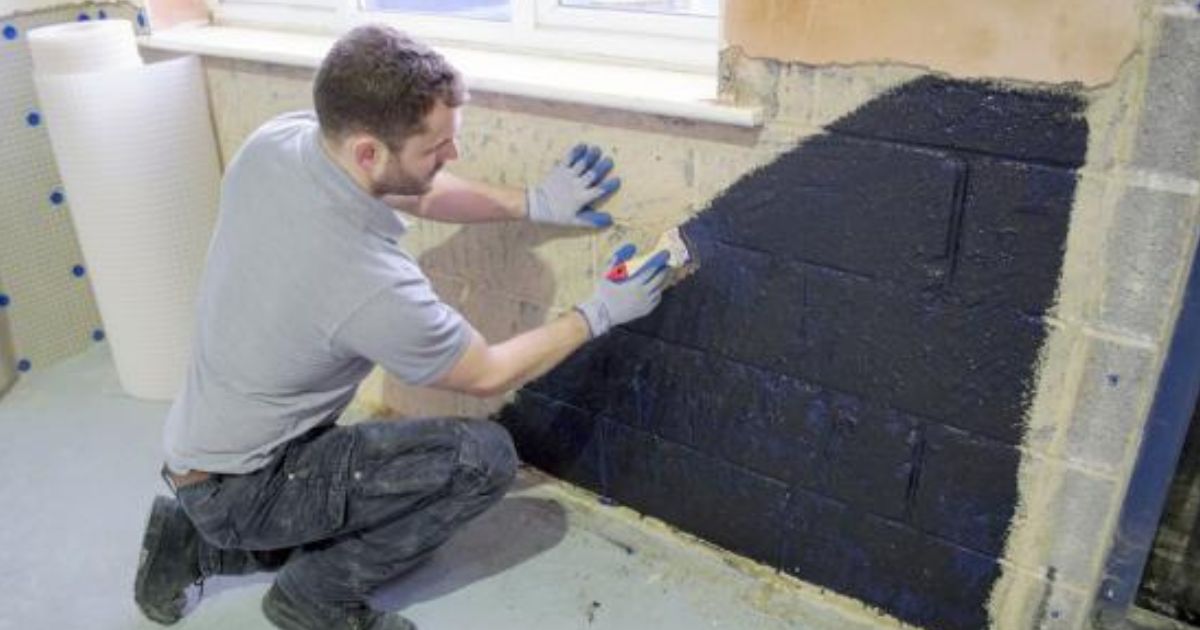The ultimate manual to mould treatment newcastle: Process from start to finish
Comprehending the Relevance of Damp Proofing in Averting Structural Damage
Damp proofing works as an essential defense against dampness infiltration in buildings. This safety procedure can avoid significant structural damages, yet several homeowner stay uninformed of its value. Acknowledging the signs of wetness and comprehending the different remedies offered can be important. However, disregarding moist proofing can lead to severe repercussions. What are the particular dangers and remedies that home owners should take into consideration?
What Perspires Proofing and How Does It Function?
Damp proofing offers as a crucial barrier against wetness invasion in buildings. mould removal newcastle. This procedure involves using certain materials and strategies to prevent water from permeating walls, floorings, and other structural elements. Normally, damp proofing can be accomplished through the installation of wet proof membranes, coverings, or making use of specialized sealants.These techniques work by producing a protective layer that prevents dampness activity, guaranteeing that the indoor environment remains healthy and completely dry. Moist proofing is particularly vital in areas vulnerable to high moisture or groundwater, as it assists maintain the stability of the structure over time.Moreover, efficient damp proofing adds to energy performance by stopping warm loss connected with moist settings. By resolving prospective moisture problems prior to they rise, damp proofing functions as a positive action in safeguarding buildings from the destructive results of water damages, ultimately lengthening their lifespan and keeping their value
Common Indications of Moisture in a Building
Dampness problems within a structure can show up with numerous noticeable indications that indicate the visibility of dampness. One popular indicator is the look of water discolorations on walls or ceilings, which commonly shows wetness seepage. Additionally, gurgling or peeling paint can suggest that excess humidity is trapped under the surface area, resulting in deterioration. One more common indication is the visibility of mold and mildew and mildew, which flourish in wet conditions and can typically be recognized by their mildewy smell. A rise in humidity degrees can trigger condensation on windows and other surfaces, highlighting wetness problems. Irregular or deformed flooring might indicate underlying moisture that jeopardizes architectural stability. Acknowledging these indications early can aid minimize potential damages and preserve a safe living environment. Normal assessments and prompt action are essential in addressing dampness concerns before they rise.
The Risks of Neglecting Damp Proofing
Ignoring moist proofing can cause substantial risks to a structure's structural stability, as wetness build-up might weaken walls and foundations. Furthermore, extended dampness creates a setting favorable to mold and mildew growth, posturing major carcinogen to occupants. Attending to these risks is important for ensuring both security and long life of the residential or commercial property.
Structural Stability Dangers
They subject their buildings to considerable architectural honesty hazards when house owners forget the significance of reliable damp proofing. Long term moisture seepage can bring about the growth of mold and mildew, which deteriorates fundamental components and can endanger total stability. In addition, excess dampness can wear down concrete and brickwork, leading to splits and structural failings. Wood components are specifically at risk; they can rot and shed load-bearing capacity, positioning major threats to the structure's structure. Untreated moist problems might draw in insects, such as termites, which additionally exacerbate structural wear and tear. Eventually, ignoring moist proofing procedures can result in pricey repairs and potential safety risks, highlighting the necessary duty of aggressive damp administration in protecting the integrity of properties.
Wellness Hazard Issues
Exactly how can an apparently small oversight lead to serious health dangers? Ignoring wet proofing can produce an atmosphere for mold and mildew development, which presents substantial health and wellness threats. Mold spores can cause allergies, respiratory system issues, and various other wellness complications, particularly in prone populaces such as kids, the elderly, and people with pre-existing conditions. In addition, relentless dampness can draw in insects like insects and rats, which carry diseases that better compromise health. The existence of wetness likewise adds to a decrease in indoor air high quality, intensifying bronchial asthma and other breathing disorders. Subsequently, the failure to address damp problems not just intimidates architectural stability however also endangers the well-being of residents, highlighting the crucial need for reliable wet proofing procedures.
Different Kinds Of Damp Proofing Solutions
Numerous elements can add to damp issues in buildings, selecting the appropriate damp proofing service is vital for protecting structural integrity. Numerous choices are available, each tailored to specific conditions.One usual option is a damp-proof membrane (DPM), generally made from polyethylene or bitumen, which is mounted in floorings and walls to protect against wetness access. One more alternative is damp-proof courses (DPC), which are layers of water-proof material put within wall surfaces to obstruct increasing damp.Chemical damp proofing includes injecting waterproofing chemicals right into walls to produce an obstacle against dampness. In addition, outside treatments such as tanking, which involves applying a waterproof layer to the outside of structures, can be efficient in stopping water penetration.Each service has its benefits and is chosen based upon the structure's specific issues, ecological problems, and long-lasting upkeep factors to consider, guaranteeing excellent security against damp-related damages.

The Price of Damp Damages vs. Avoidance
Recognizing the financial implications of wet damages compared to prevention highlights the value of aggressive actions. The costs connected with wet damages can be substantial, consisting of repair services to structural aspects, mold and mildew remediation, and prospective health-related expenses. Home owners may encounter considerable monetary pressure if substantial damage takes place, bring about raised insurance coverage premiums and lost residential property value.In contrast, purchasing moist proofing options is typically much more affordable. Initial costs for avoidance methods, such as improving or mounting damp-proof membranes water drainage systems, are frequently surpassed by the long-term savings from preventing expensive repair work. In addition, preventing moist concerns can boost a residential or commercial property's general worth and allure, making it a wise investment. When assessing the expense of damp damage versus avoidance, it becomes clear that taking positive actions can safeguard economic interests and preserve the stability get more info of the property gradually.
Choosing the Right Damp Proofing Approach for Your Residential or commercial property
Which wet proofing technique is most ideal for a certain home usually depends on numerous variables, consisting of the structure's age, existing dampness issues, and regional environmental problems. For older frameworks, traditional techniques such as bitumen membrane layers or cementitious finishings may be extra reliable, as they can offer a robust obstacle against climbing damp. On the other hand, newer structures may take advantage of modern-day remedies like infused damp-proof training courses, which are much less invasive and can be customized to specific dampness challenges.Additionally, properties in areas with high water tables or hefty rains may call for more advanced methods, such as cavity wall drain systems or exterior waterproofing. Homeowners ought to additionally think about the details products made use of in their structure's construction, as some techniques might not work. Ultimately, a detailed analysis by an expert can direct homeowner in picking one of the most reliable damp proofing method customized to their one-of-a-kind situations.
Maintaining Your Damp Proofing System With Time
Normal upkeep of a damp proofing system is vital for guaranteeing its long-lasting effectiveness and safeguarding a residential or commercial property from moisture-related damage. Residential or commercial property owners ought to perform regular evaluations to recognize any type of indications of wear or compromise in the wet proofing layer. This includes checking for splits, peeling off paint, or mold development, which may indicate wetness intrusion.Additionally, it is suggested to tidy gutters and downspouts on a regular basis to protect against water build-up around the foundation. Reapplying sealers or membrane layers may be required if damage is observed.Engaging professional services for routine evaluations can even more enhance the resilience of the system. These experts can provide understandings into potential vulnerabilities and suggest timely fixings.
Often Asked Inquiries
How Much Time Does Damp Proofing Treatment Last Prior To Needing Repair Services?
The durability of moist proofing treatment commonly varies from 10 to 30 years, depending on elements such as the technique utilized, ecological conditions, and maintenance techniques. Regular assessments can aid figure out when fixings may be essential.
Is DIY Damp Proofing Effective Contrasted to Specialist Services?
The effectiveness of do it yourself wet proofing differs considerably. mould treatment newcastle. While some individuals might achieve adequate outcomes, expert services usually ensure extensive solutions, leveraging expertise and top quality materials to avoid future issues much more accurately than most do it yourself attempts
Can Damp Proofing Improve Indoor Air Quality?
The question of whether damp proofing can boost indoor air quality develops regularly. Effective damp proofing decreases dampness levels, consequently lessening mold and mildew development and irritants, inevitably adding to a healthier indoor setting for residents.
Exist Specific Rules for Damp Proofing in Different Areas?
Rules for damp proofing vary by area, often influenced by regional building codes and environmental problems. Compliance guarantees efficient dampness control, safeguarding structures and advertising security, which highlights the need for adherence to these particular policies.

What Are the Long-Term Perks of Proper Damp Proofing?
The lasting benefits of proper damp proofing include enhanced structural stability, decreased maintenance costs, improved interior air high quality, and enhanced residential or commercial property value. These benefits add to a much healthier living environment and extended lifespan of structures. Typically, damp proofing can be attained via the setup of damp evidence membrane layers, coatings, or the usage of specialized sealants.These approaches function by producing a safety layer that prevents moisture movement, making certain that the indoor setting stays completely dry and healthy. Wet proofing is particularly vital in areas vulnerable to high moisture or groundwater, as it assists keep the stability of the framework over time.Moreover, efficient damp proofing adds to power efficiency by avoiding warmth loss linked with wet environments. Ignoring wet proofing can lead to significant hazards to a structure's structural honesty, as moisture accumulation might compromise walls and structures (mould removal newcastle). Various aspects can contribute to damp issues in buildings, selecting the appropriate wet proofing remedy is crucial for maintaining structural honesty. Which moist proofing approach is most appropriate for a certain property typically depends on numerous elements, including the building's age, existing dampness issues, and local ecological problems